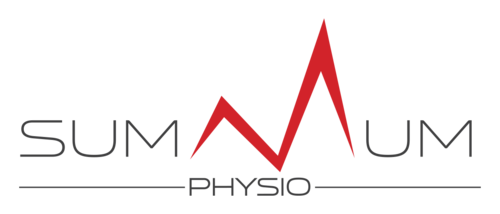Definition, origin, and experimental medicine
Acupuncture is the main part of traditional oriental medicine and is an integral part of this medicine. Acupuncture appeared in Asia about 5000 years ago. Since its beginnings, it has established itself and is practiced all over the world. It can be said that it is a truly empirical medicine, since it is based on very rich experiences accumulated and proven by these clinical experiences practiced for 5000 years.
Recognition and regulation
The World Health Organization (WHO) recognizes its consistency, relevance and effectiveness. In addition, a list of known diseases and conditions that are effectively treated by acupuncture was published by the WHO in 2002. In Quebec, the practice of acupuncture has been governed by the Ordre des acupuncteurs du Québec (OAQ) since 1995. This means that only the acupuncturist who is registered with the OAQ has the right to practice acupuncture in Quebec. Like any professional order, the OAQ has the mandate to ensure the regulation and protection of the public.
Features and Benefits
Acupuncture is a natural medicine that restores health without chemicals or side effects. It is also a preventive and curative medicine that rebalances the different functions of our body. It also allows us to increase the body's resistance to stress and increase the capacity of our immune system.
Energy balance or imbalance
Acupuncture is an "energetic" medicine because it focuses on the Qi, i.e. the Vital Energy. This vital energy circulates, together with blood and body fluids, in the different parts of the body, through the "Meridians" which are complex circuits of channels. If this energy circulates well, we are in good shape or in good health, this is what is often called "energetic balance". On the other hand, the circulation of this energy can be slowed down or blocked by stress, badly experienced emotions, diet, climatic variations and various environmental factors. This partial or total disruption of communication between the various parts of the body will cause an "imbalance" from which fatigue, pain and ultimately the health problem, i.e. illness, etc., can result.
Acupuncture treatment
Acupuncture treatment essentially consists of the application of fine needles to specific points on the body in order to rebalance the patient's energy flow. At this point, the acupuncture points will be used to promote a better flow of energy, as well as to aim at renewing the "energy balance". The needles used do not contain any chemical substances and are very thin, already sterilized and single-use. The treatment itself is not painful and usually generates a pleasant feeling of relaxation.
Process Flow
The session consists mainly of three parts: first, the "energy assessment" which corresponds to the diagnosis, then the application of the treatment, and finally the relaxation time. For the "energetic evaluation", the acupuncturist will proceed with a detailed analysis of the patient's conditions or state of health. This evaluation is done in "4 steps": observation, auscultation, palpation and questioning. Pulse-taking, tongue observation, palpation of certain areas of the body and joint evaluation are very common and representative examinations. Based on this "energetic evaluation", the acupuncturist will be able to establish an appropriate therapeutic orientation or strategy for the patient. This is followed by the actual treatment. Once the last needle has been received, the patient will have a privileged time of 20 to 30 minutes, during which he or she will relax in a very peaceful atmosphere.
Which disorders respond effectively to acupuncture?*
If your condition does not appear on this list, please ask your acupuncturist.
General disorders: fatigue, stress, anxiety, headaches, migraines, insomnia, jet lag, etc.
Digestive disorders: lack of appetite, slow digestion, bloating, colic, diarrhea, constipation, nausea, vomiting, Crohn's disease, etc.
Respiratory disorders: Asthma, sinusitis, allergies, colds, rhinitis, bronchitis, laryngitis, coughs, etc.
Endocrine disorders: Menopause, hot flashes, heavy or night-time sweating, etc.
Circulatory disorders: Hemorrhoids, chills, oedema, palpitations, etc.
Gynaecological disorders: Sterility, menstrual disorders, premenstrual syndromes, endometriosis, cysts, etc.
Skin disorders: eczema, shingles, hives, psoriasis, etc.
Musculoskeletal disorders: spasms, some paralysis, trembling, etc.
Hearing disorders: ear infections, buzzing, Meniere's syndrome, vertigo, labyrinthitis, etc.
Pain: rheumatism, lumbago, sciatica, torticollis, neuralgia, back and neck pain, tendonitis, bursitis, carpal tunnel, sprains, etc.
Pregnancy: nausea, vomiting, back pain, lactation problems, increased energy, etc.
Is there a possibility of disease transmission?
The risk of disease transmission is impossible since the acupuncture needles are sterile and disposable after each session. In addition, they are made of stainless steel and do not have a puncture like a syringe needle. No substance can be injected into the body through the needles.
Can there be any side effects?
Acupuncture treatment does not produce side effects or dependence. No chemicals are used.
Is the cost of treatment reimbursable?
Acupuncture treatments are not covered by the health insurance plan. Many private insurance companies reimburse part or all of the treatments. For patients covered by the Commission des normes, de l'équité, de la santé et de la sécurité du travail (CNESST) and the Société d'assurance automobile du Québec (SAAQ), treatments are covered in full.


